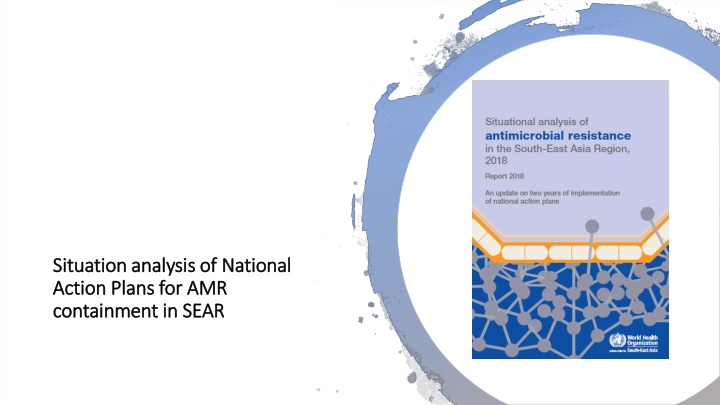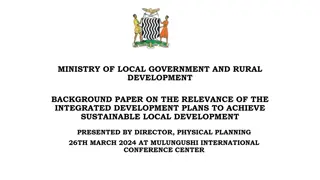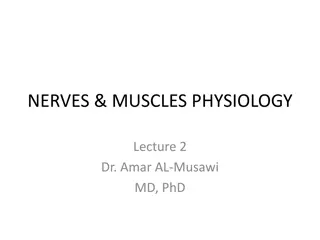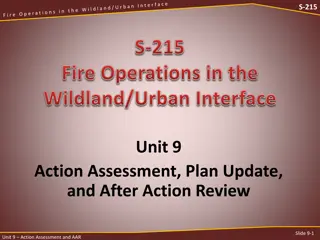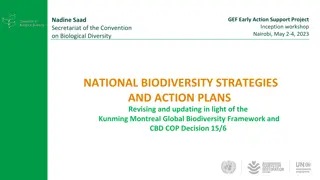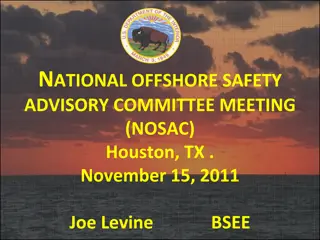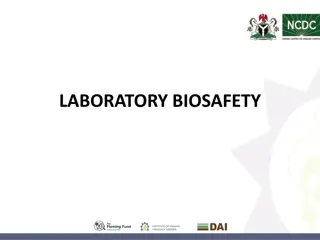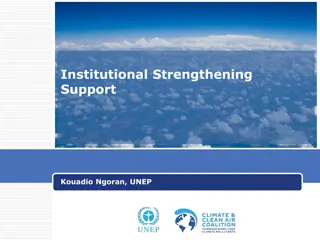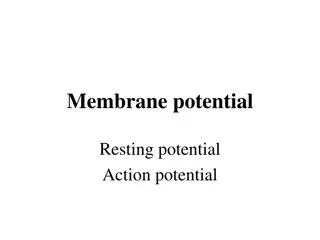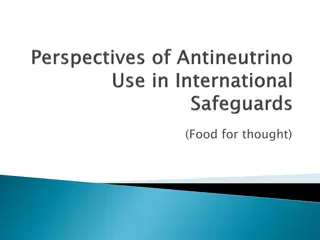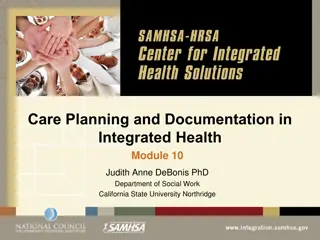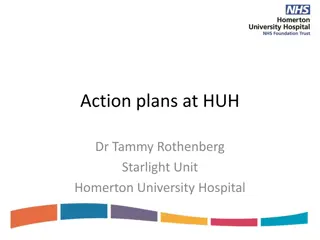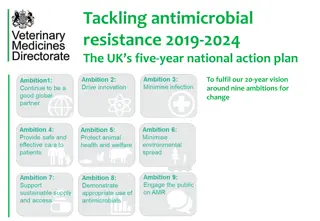Comprehensive Analysis of National Action Plans for AMR Containment in SEAR
In Southeast Asia Region (SEAR), a high-risk area for antimicrobial resistance (AMR), qualitative risk analysis indicates a significant AMR threat. The region has implemented comprehensive policies and developed National Action Plans (NAPs) to combat AMR. A specialized situation analysis tool, focusing on key areas such as governance, surveillance, stewardship, and One Health engagement, is used to assess NAP implementation progress. The tool evaluates strategic interventions across various phases, from exploration to sustainable operation, to achieve effective AMR containment programs in SEAR.
Download Presentation

Please find below an Image/Link to download the presentation.
The content on the website is provided AS IS for your information and personal use only. It may not be sold, licensed, or shared on other websites without obtaining consent from the author.If you encounter any issues during the download, it is possible that the publisher has removed the file from their server.
You are allowed to download the files provided on this website for personal or commercial use, subject to the condition that they are used lawfully. All files are the property of their respective owners.
The content on the website is provided AS IS for your information and personal use only. It may not be sold, licensed, or shared on other websites without obtaining consent from the author.
E N D
Presentation Transcript
Situation analysis of National Situation analysis of National Action Plans for AMR Action Plans for AMR containment in SEAR containment in SEAR
SEAR, a region at highest risk globally for SEAR, a region at highest risk globally for emergence and spread of AMR emergence and spread of AMR Antimicrobial resistance is a global public health concern that has significant health and financial consequences Qualitative risk analysis suggests that this Region is probably at the highest risk globally for the emergence and spread of AMR Antimicrobial drugs are used extensively in the livestock and aquaculture sectors by 2030, India will be the fourth largest consumer of antimicrobials in livestock and Indonesia will show largest relative increase in antimicrobial consumption between 2010 and 2030 (A) Largest five consumers of antimicrobials in livestock in 2010. (B) Largest five consumers of antimicrobials in livestock in 2030 (projected) (C) Largest Increase in antimicrobial consumption between 2010 and 2030 (D) Largest relative increase in antimicrobial consumption between 2010 and 2030 Region has developed comprehensive policies and adopted several Regional Committee resolutions on prevention and containment of AMR By early 2018, all 11 Member states had developed their multisectoral NAPs on AMR and initiated activities across different strategic objectives
Enabling countries to assess development and measure Enabling countries to assess development and measure progress of NAP AMR implementation to achieve progress of NAP AMR implementation to achieve sustained operations of AMR containment sustained operations of AMR containment programmes programmes SEAR AMR SITUATION ANALYSIS TOOL FOCUS AREAS SEAR/HIM has developed a situation analysis tool to conduct a system-wide analysis of programmes for prevention and containment of AMR Through guided discussions, progress is reviewed jointly by national stakeholders and WHO, in collaboration with FAO, OIE and UNEP representatives. NAP being in line with GAP- AMR governance Raising of awareness National AMR surveillance system Rational use of antimicrobials and surveillance of use/sales (community-based) Infection, prevention control and AMR stewardship Research and innovation One Health engagement Overarching coordination mechanisms for One health engagement Progress of implementation is assessed against 8 focus areas and 30 indicators as a proxy for strategic interventions/ programmes Each indicator is graded along five phases based on level of implementation: First phase (exploration and adoption): Process of designing AMR containment programme initiated Second phase (programme installation): Programme implementation decided; initial activities under way Third phase (initial implementation): Change or intervention initiated Fourth phase (full operation): Successful model of the programme scaled up Fifth phase (sustainable operation): Highest grade of operational efficiency attained
Overall progress of NAP AMR implementation Overall progress of NAP AMR implementation Overall, significant progress has been made in AMR prevention and containment initiatives in the Region; confirmed by the change in median progress between 2016 and 2018 *Progress assessed for 20 indicators based on Situation Analysis tool 2016; Situation Analysis was not conducted in DPRK in 2016 and so progress not compared in 2018 ** Progress assessed for 30 indicators (10 newly introduced indicators) based on Situation Analysis tool 2016
Status of implementation of key interventions in SEAR, Status of implementation of key interventions in SEAR, 2018 2018 No initial implementation or no change Initial implementation and above Sanitation-hygiene programs in community settings (10) Establishing a functional NRA or DRA (10) Awareness in general public (9), education and training (9) Development of multisectoral NAP-AMR & governance structure (8) Regulations of finished products & APIs (8 countries) National lab network (7) Surveillance of use & sale in humans (7) Regulation of OTC sales (7) Implementation of the nationally coordinated AAW (7) Vaccination as a strategy to prevent infection (6) Overarching coordination mechanism (3) Inclusion & engagement of relevant sectors (3) Platform for sharing AMU data (3) IPC in health-care settings remained the same Early warning systems (none) National policy/regulatory framework for controlled release of AR and AMR in the environment (none) Platform for sharing of AMR data across sectors (none) Awareness and education programs for the environment sector (none)
NAP AMR implementation in SEAR: the big NAP AMR implementation in SEAR: the big picture picture Significant progress has been made in AMR prevention and containment initiatives in the Region in the last two years Interventions aligned with existing efforts, such as sanitation and hygiene programmes, demonstrated better results, even though the quality, extent and robustness of these initiatives was yet to be established through systematic monitoring and evaluation In most cases, implementation posed challenges and will require effective operational plans to help overcome Previous investments to strengthen public health laboratories in disease surveillance have provided an important launch pad for initiating a laboratory network in most countries Progress made in establishing governance mechanisms as part of the NAP-AMRs, forming the basis for future advancement and consolidation of multisectoral and collaborative action In general, there has been less progress across different focus areas and indicators in the animal health sector. This could impact One Health engagement and effective multisectoral collaboration Lack of awareness, policies, standards and guidelines, have critically hampered introduction and implementation of interventions such as AMR surveillance, IPC in health care facilities, HAI surveillance and AMSP Most countries in the Region are yet to put together a strategic research agenda that is relevant to the current policies and programmes and address implementation challenges in the way of AMR containment efforts in the Region
